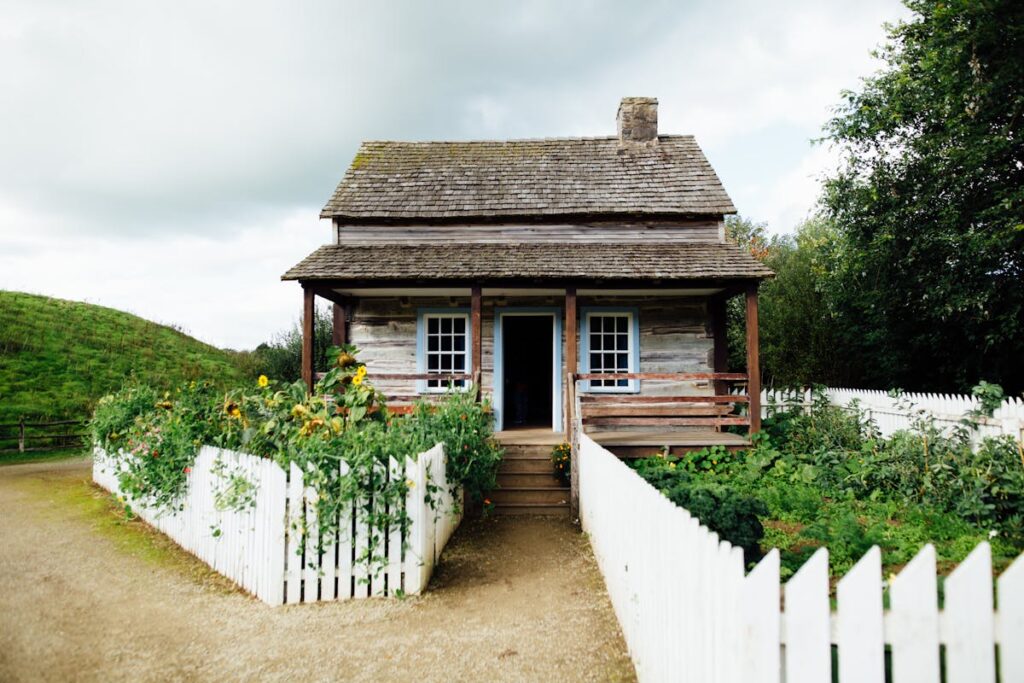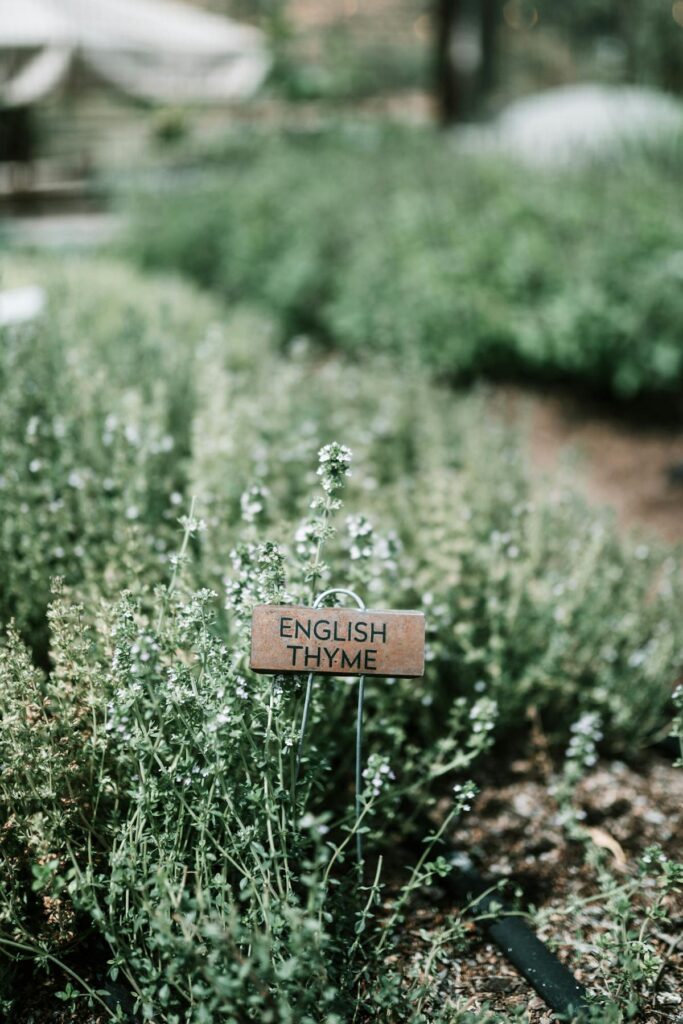Beautiful, charming, whimsical: a cottage garden offers it all. Originating from rural England, this gardening style features a blend of flowers, herbs, and vegetables in small, informal plots around their cottages.
What sets them apart from traditional gardens? They aren’t as tied to symmetry or structure, but more free-flowing in design with dense plantings that feel romantic, wild, and intentional.
Cottage gardens celebrate the art and beauty of gardening with a more relaxed approach.
Typically, you’ll see plants spilling over borders, reaching trellises and pathways that flow through a sea of colorful blooming florals.
This style is not about perfection – it’s all about letting the space feel abundant and flowy.
The key features of a cottage garden include:
- A beautiful mix of florals and plants like annuals, perennials, herbs, and vegetables
- Climbing plants for vertical appeal, like clematis and wisteria
- The use of natural materials like gravel and wood
- Pollinator-friendly plants to attract bees, butterflies, and birds
The beauty of cottage gardens is that they can work in a variety of spaces, whether you have a large sprawling backyard or a small urban plot. They are also perfect for gardeners who love diversity and beauty, and who don’t mind a little disarray.
Navigate This Post
Why Choose a Garden Cottage?
If you’re a dreamy, non-traditional garden lover, the winding paths and overflow of a cottage garden are probably perfect for you. With this type of garden, you can embrace your wild and free side as you opt for growing a large variety of flowers, herbs, and vegetables.
Another plus? You get to turn your garden into the perfect escape. Whether you’re starting from scratch or sprucing up a corner of your yard, cottage gardens offer a space to let your garden fantasies run wild. All you need is the right mix of plants, materials, and some design magic to get started.

Designing Your Cottage Garden
Cottage gardens typically shy away from being really structured – this is where your plants and imagination can run free. Start planning for a layered look, where you allow plants to spill over borders.
Here are some key elements to consider:
1. Layout & Pathways
- Gravel, brick, or mulch can be used to create charming winding paths
- Arches, trellises, and picket fences are great for defining spaces and supporting climbing plants
- Bird baths, benches, or vintage flowerpots add beautiful points of interest

2. Soil & Mulch
- Test your soil first to understand what your garden needs
- Improve soil quality by utilizing organic matter like compost, leaf mold, or bark
- Organic mulch or wood chips can help retain moisture (and suppress annoying weeds)

3. Vertical Interest
- Climbers like wisteria, sweet peas, and clematis add a beautiful touch to trellises and archways
- Get “just a little” structured – for instance, using garden cloches or obelisks adds and supports height without looking too exact.

Cottage Garden Plants and More
Cottage gardens are all about displaying a unique and rich variety of plants. So instead of sticking to one type or style, this is where you can let several of your favorites shine from different colors, heights, to textures. Diversifying plant species can actually help your plants grow, attract pollinators, and keep pests and disease in check.
Here are a few of our top recommendations:
Annuals
Annuals complete their life cycle in one growing season, meaning they sprout, bloom, and die all within a year. Since they flower pretty often, they can offer vibrancy and color to your garden.
Why add them? To fill gaps and enhance seasonal variety.
We think you’ll love: Sweet peas, zinnias, cosmos, nasturtiums, marigolds

Perennials
Perennials return year after year, often growing stronger and fuller with time. Some perennials live a couple of years, while others can have a lifespan lasting decades. We consider these the backbone of a cottage garden, giving it structure and consistency.
Why add them? They’re low-maintenance and long-lasting.
We think you’ll love: Peonies, daisies, lavender, foxgloves, coneflowers

Herbs
Herbs are easy to grow, beautiful, fragrant, and add a different texture to your garden. Many herbs are also pollinator-friendly and repel pests. Herbs can be used in a variety of ways, like cooking, teas, or natural remedies.
Why add them? They smell great and are often drought-tolerant.
We think you’ll love: Rosemary, thyme, sage, mint, chives

Vegetables
Use your garden cottage to create your own abundance. Vegetables bring a functional element to your garden (visually and as a food source) – also, many vegetables like tomatoes and beans can be trained to climb.
Why add them? Fresh food (need we say more?).
We think you’ll love: Lettuce, kale, tomatoes, pole beans, squash

By combining these plant types, your charming cottage garden will not only look beautiful but will also be resilient and bountiful. Plant diversity helps prevent pests, attracts helpful insects, and gives your garden everything it needs to thrive throughout the changing seasons.
Pollinators and Birds
Cottage gardens are perfect for attracting pollinator insects. To get them buzzing their way into your garden, be sure to add nectar-rich plants like lavender and coneflowers. The goal is to create a safe environment for these helpful friends to thrive, so be sure to avoid using pesticides.
For birds, try adding a shallow bird bath so they can clean, swim, and gather. Water features create an inviting space for feathered friends and add to the overall ambiance. In addition, consider adding nesting boxes tucked among climbing roses or ivy-covered trellises to give them a cozy home when visiting.
Styling Tips and Tricks
Styling your cottage garden is all about letting your blooms run wild. Natural materials, flowing plants, and a little free-spiritness will go a long way.
- Use natural materials like wood, stone, and terracotta
- Let plants do their thing – specifically, allowing them to spill over paths freely.
- Add whimsy with vintage garden tools or painted signs

Low-Maintenance Tips
There are a few ways you can make maintaining your cottage garden an easeful experience, like choosing resilient plants and maintaining soil with natural solutions.
- Drought-tolerant plants are great for reducing watering (and saving money)
- Group plants! Arrange them by soil moisture levels and sunlight needs
- Compost is your friend – use compost and organic soil to feed plants naturally
- Use dense planting and mulch to keep the weeds away
Cut Flowers for Celebrations
Whether you’re celebrating a birthday or a major holiday, your cottage garden will save you a trip to the local florist. Just head right to your yard and pick out your favorite florals to create your unique arrangement. Also, as you learn more about your plants’ growing patterns, you’ll know which flowers are in season for special celebrations.
With a little planning, you can have blooms throughout the growing season for DIY bouquets (or starting a local flower delivery).

It doesn’t matter if you’re a seasoned gardener or just starting out, a cottage garden is all about creating a space that brings you joy. So don’t worry about being perfect! With the right plants, layout, and a touch of free flowy creativity, your cottage garden can become the perfect sanctury for wildlife, and you.
Ready to grab your gloves? Let’s get planting!
More gardening inspiration we think you’ll love!
- Design a Garden: Easy Ideas for New Gardeners
- Easy Breezy Landscaping with Low-Maintenance Outdoor Plants
- Good Soil vs. Bad Soil & How to Prep Soil for Your Garden
The post Wild Blooms to Winding Paths: Charming Cottage Garden Ideas appeared first on Curbly.



